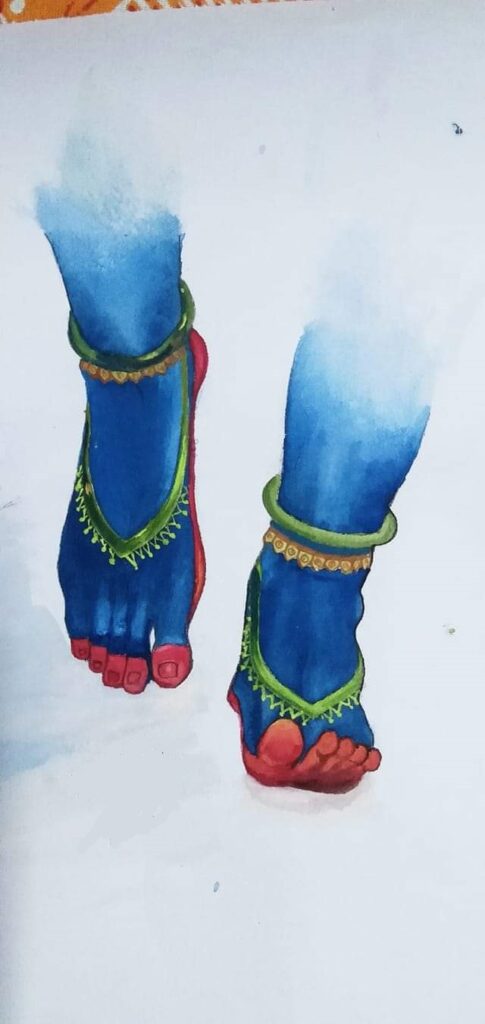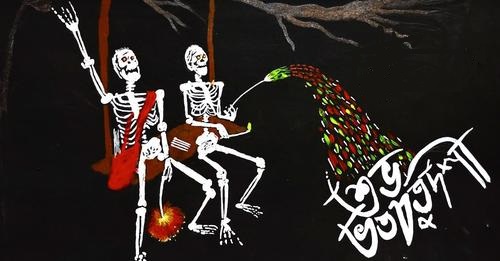We live in different countries, celebrate various festivals with other names, but a thin thread attaches all these festivals. Halloween & Bhoot Chaturdashi is one of these festivals, celebrated so differently yet so similar to each other.
Let’s see how….
Most of the Western world countries are marked by the arrival of Halloween. And its relationship with the world of the dead at the end of October.
During the same time of the year, a part of India, especially West Bengal, pays respect to their forefathers by performing the ritual of Bhoot Chaturdashi. And marking the victory of light over darkness.
STORY BEHIND THE SPOOKY HALLOWEEN
Halloween is one of the most renowned occasions throughout the world. Observed on the last day of October, this ritual had its root from the primitive Celtic festival of Samhain celebrated in Ireland. It was marked by the end of summer and crop harvesting season. And the commencement of the gloomy and cold winter season, which witnessed many human deaths.
Celts had a belief that on the night of October 31, the border between the living and the dead world became faint, and the ghosts returned to the earth.
Primarily celebrated in Western countries, Halloween is nowadays marked by funny and weird activities like trick-or-treating, carving Jack-o-lanterns, festive gatherings, dressed up in ghostly Halloween costumes and eating treats.
Orange is the significant color of Halloween. It’s also the fall color as well as the changing color of trees. Before the onset of the gloomy winter, it’s probably the last event celebrated in dazzling colors.
So, what does bhoot chaturdashi have to do with Halloween?
SIGNIFICANCE OF BHOOT CHATURDASHI
Hindus, especially the Bengalis of West Bengal celebrate Bhoot Chaturdashi or Narak Chaturdashi in the month of autumn. According to the Saka era calendar, the custom is performed on the 14th day of Krishna Paksha in the Hindu month of Kartik, on the eve of Kali Puja.
The Bengalis believe that, on this day, the boundary between the material and the spiritual world fades off. And the ghosts and spirits, particularly their forefathers, wander the living world. As we believe the wicked power is stronger on the night of Bhoot Chaturdashi, we conduct rituals to forbid these evil forces.
The Bengalis light 14 earthen lamps or candles at their doors to welcome the spirits of 14 generations of their forefathers (Choddo Purush) and wave off evil spirits. We lit up every dark corner of the house with lamps or candles. We also have a ritual to eat 14 different kinds of leafy greens (Choddo Shaak) cooked together.
On both the days of Kali Puja and Bhoot Chaturdashi, people worship Goddess Kali, to keep their family and kids safe from the evil forces.
Read: Unveiling Durga Puja in Kolkata
SIMILARITIES BETWEEN THE TWO EVENTS
Although Halloween is a western concept and Bhoot Chaturdashi is totally an Indian concept, they are pretty similar to each other despite their diversities.
Both have evolved a long time ago and highlighted living beings’ never-ending interest in life after death. On the night of Halloween, the mischievous forces are dominant in the living world. Similarly, there is a notion that the last 14 forefathers of a family visit their relatives on Bhoot Chaturdashi.
We practice both the rituals in the autumn season when the days are shorter and the nights are long. People harvest crops, marking the arrival of a foggy and chilly winter season.
There is also a similar custom of using vegetables and consuming them at the end of the fest. While a variety of pumpkin dishes follows Jack-o-lanterns, Bhoot Chaturdashi has 14 different types of leafy greens cooked together.
THEY DIFFER FROM EACH OTHER
For Obvious Reasons
Due to the difference in cultural backgrounds, the celebrations are quite different from each other.
On Bhoot Chaturdashi, we illuminate our houses with lamps or candles. Whereas, in the West, they hang lanterns, mostly made by cutting pumpkins around the house on Halloween.
Unlike Halloween in western countries, marked by Jack-o-Lanterns, get-togethers and trick-or-treating in ghostly costumes, we perform the rituals of Bhoot Chaturdashi through various traditional activities, followed by scary ghost stories.
But irrespective of any political and international boundaries, the celebration of both Halloween and Bhoot Chaturdashi unquestionably brings human minds closer to each other, which is undoubtedly the prime aspiration of any festival.
Read: The legacy of the Bengali Agomoni Songs

Image Courtsey: Souptima Basu

